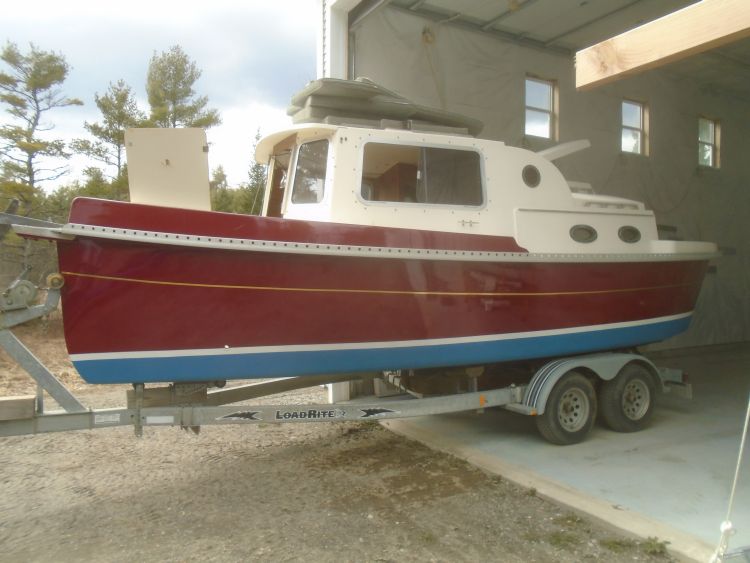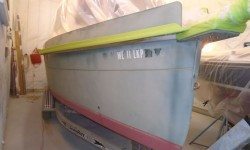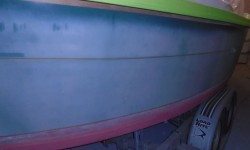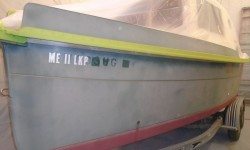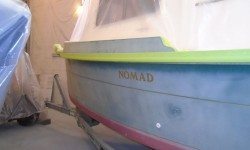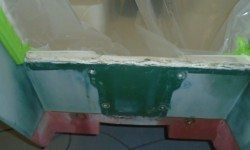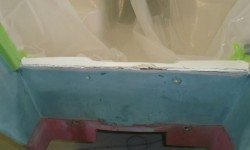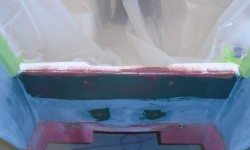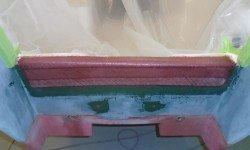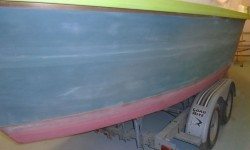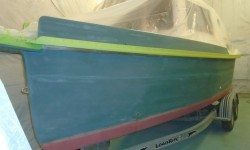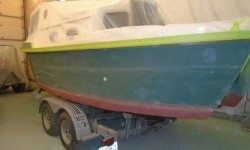December 19, 2015
Nomad 6
Saturday
The original gelcoat on the hull was badly oxidized and faded, but essentially in great condition otherwise, meaning my painting prepwork would be straightforward. With the decks all masked off from the last work session, it didn’t take me long to get set up and ready to start sanding.
I sanded the hull twice–80 and 120 grits–with a 6″ finishing sander, scuffing the gelcoat and bringing it to the level of sanding required for high-build primer. It didn’t take long, as gelcoat sands easily and the heavily-weathered surface made the process that much easier. I sanded everywhere the tool would fit, which was most everywhere, but there were some areas that would require detail and hand-sanding.
Next, I took care of some heavier-duty sanding at the transom, where the deck/hull joint had separated right in the motor well–a nearly universal condition on production outboards, it seemed. Someone in the past had sort of caulked this joint, but with the outboard gone it was the perfect time to effect a more lasting repair. To begin, I sanded away any loose material and old sealant, and ground the gelcoat on the deck edge and transom to prepare for fiberglass, while also rounding over the edge a bit to allow for fiberglass to lay cleanly.
After cleaning the area, I applied some epoxy thickened with silica to the seam, filling any voids and smoothing over the edge as needed. While the fill was still pliable, I installed a 6″ and 4″ layer of biaxial fiberglass over the seam, forming a smooth and strong reinforcement to the joint.
While the transom began to cure, I went around the boat and hand-sanded as needed to take care of all the areas the sander couldn’t reach. Afterwards, I cleaned up and solvent-washed the hull to prepare for the next steps, including some minor gouge filling and the continuing transom repair.
Total time billed on this job today: 4.25 hours
0600 Weather Report:
22°, mostly clear. Forecast for the day: Partly sunny, 39°, chance of snow showers


